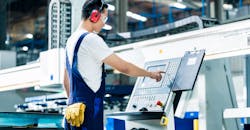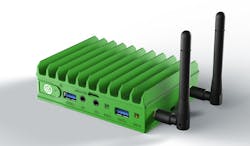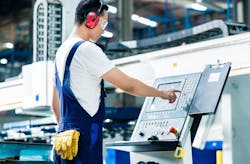What’s the Difference Between Sensor and PLC Data?
When it comes to collecting data with the Industrial IoT (IIoT) within the world of manufacturing, it isn’t just about quantity: It’s also about the quality of the information that you are gathering from various machines. It is important to have data that enables you to analyze it and make decisions now, as well as for the long term.
Deep Data vs. Big Data
Read about the IIoT and you’ll find a lot of information on the usefulness of big data and predictive analytics, which is true. According to an article in Forbes, “While the volume, speed, and variety that Big Data provide can no doubt unveil important effects that escape both the human eye and traditional methods of empirical research, that is simply the first step in the process of creating valuable insights that derive in evidence-based interventions. Predicting outcomes is helpful, but explaining them—understanding their causes—is far more valuable, both from a theoretical and practical perspective.”
Companies like MachineMetrics have built plug-and-play adaptors for most controls including Fanuc FOCAS, OPC-UA, Mitsubishi, Haas, Heidenhain, Siemens Sinumerik, and Modbus, often enabling the capture of hundreds of data points directly from the PLC.
The author, in this case, was referring to human resources (HR) processes in his piece, but his assertions are just as valid for the factory floor as they are for the hiring department. Big data is about capturing the vast quantities of data that is already available and analyzing it…in other words, looking at the data in a different way. Much of the data will be helpful, but some won’t, nor will some of the results.
Deep data takes that analysis down to a more granular level. By eliminating data that isn’t relevant to a certain course of investigation and focusing on streams, the predictive trends that result from analyzing deep data are likely to be more accurate overall.
Sensor Data vs. PLC Data
Sensor data is all data from a specific sensor on a machine, within a designated timeframe. It is designed to monitor something specific, like a vibration, which might tell the operator that a machine is on vs. off. That data may or may not be meaningful when reviewed or analyzed.
A PLC is able to pull a large amount of data items that, together with the sensor data, gives you a fuller picture of what’s going on with any given machine. It can monitor inputs and outputs to and from a machine, and can make logical decisions when necessary, based on programming.
Some machines with legacy controls or no controls at all require additional hardware/integration support to capture data. Seen here, digital and analog I/O is captured through auxiliary hardware, and sensors can be added either as a new data point or in addition.
Why Having Both Sets of Data is Optimal
The key to high-quality analytics and results is to be able to have a platform that can both capture deep PLC data and the data from sensors, which monitor more specific items that might not be available via the PLC.
For example, as noted above, while a sensor may provide the vibration limits on a certain machine or part of a machine, the PLC data from that machine might include parameters to signal that a fault is in the process of occurring in production. With PLC data comes the ability to control for operations, including the sequence of activity that a machine might be engaged in, timing for certain tasks, and so on. When the data returns that one of these programmed elements is out of line, the operator can respond more quickly than if they had to manually investigate an issue with the output.
Logic can be programmed into a PLC to ensure that the data being returned matches what is desired and the machine if functioning at an optimal level. This is more in-depth than the notion of whether or not a machine is vibrating or not.
Having both sets of data analyzed and returned to the user provides much more information than sensors on their own would, allowing the operator the flexibility of collecting the necessary data in a timely fashion to avoid costly downtime and maintenance issues. Instead, planned downtime and proactive, predictive maintenance can take place, increasing efficiency and boosting the bottom line.
Graham Immerman is director of marketing for MachineMetrics.



